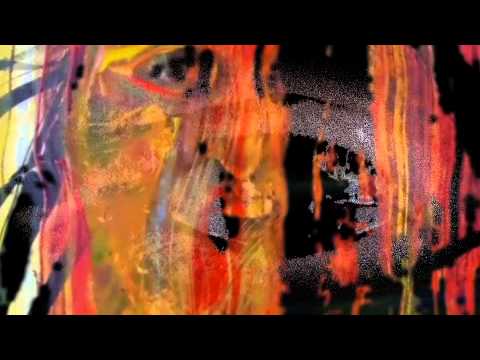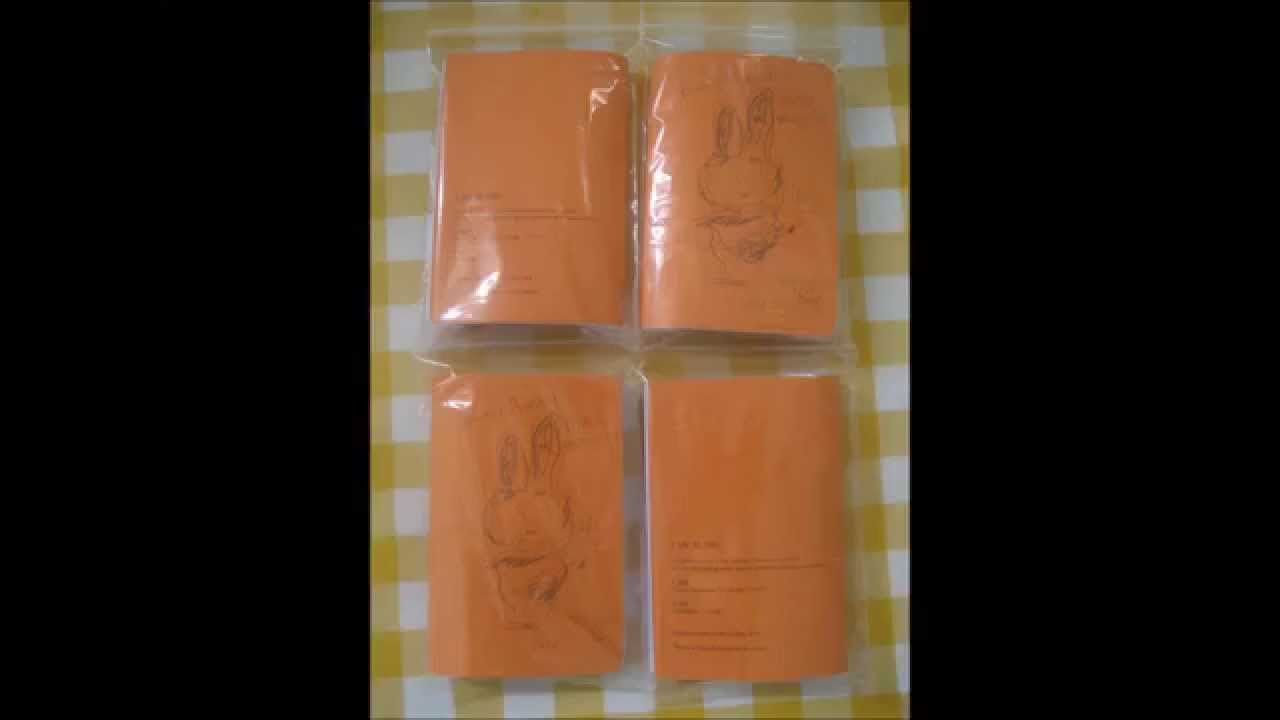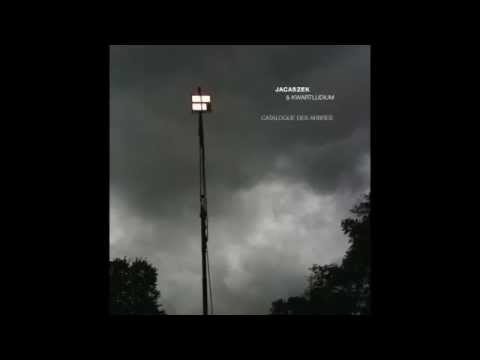I often wonder what goes on in the mind when we listen to rum music. That is, works that don’t just rely on feeding us regular patterns to anticipate, or whose sound sources are less likely to be recognised. Popular psychology books can render music as a mere reward scheme where the pleasure centres of the brain get a shot of dopamine for each melodic or rhythmic manoeuvre we predict or recall. Hosting this musical happy hour, it is suggested, are the network of neurons that also comprehend words, giving rise to the popular opinion that music is a language.
But, what happens when we parse a recording more concerned with timbre, textures and intensity and ways in which these are combined, modulated and diffused in our listening space? Do we get to bypass our language circuits, perhaps, providing a rare return to a more primitive mental mode when thoughts were formed of something other than the lexicons to which we are now conditioned? And, if so, how does this change us and the way we perceive the world after we’ve had a holiday from the coarse granularity of language, swimming in pools of thought unpolluted by convention and the need to comprehend.
This round-up of rum releases attempts to highlight works that possess this power to provide a break from the norm. They focus on contrasting their more regular musical movements with irregular aspects of sound (or, in some cases, completely ignoring the former in favour of the latter), and, as such, require total engagement from their listeners. It does seem odd, in a way, to specifically promote attentive listening in an article on music, and yet, with the vast majority of the constantly quadruplicating stockpile of new releases merely aiming for an applied function – be it background matter for meals, blueprints for dance, or soundtracks for travel, say – these works need to be taken neat. They are pure, food for thought, head music for heads, psychological releases that provide a psychological release. Welcome to rum music…
Peter Christopherson – Time Machines II
Electric Sewer Age – Bad White Corpuscle
(Old Europa Cafe)
Sadly, with Peter ‘Sleazy’ Christopherson’s passing in 2010, the world lost one of its keenest proponents of music as a force for change. Indeed, for this latest posthumous release first announced in 1998 as a sequel to Coil’s "hardcore La Monte Young" set of meditative, temporal slips, Sleazy is quoted in his final year as having noted that "the last few years have seen me becoming more interested in changing state (legally obviously) not as a route to intoxication, leading to loss of Awareness of the Present Moment, but as a way of opening doors to new visions, capabilities and knowledge". Time Machine II’s seven tracks avoid repeating the minimal drone tactics of the first volume, instead presenting an experimental set of electronic assays containing feint traces of the joyful Eastern pop that infused his releases as Threshold Houseboys Choir within dense and dominant measures of machine noise. As such, these tracks seem much wilder and more wayward than his late solo output, clearly less concerned with form and melody; instead, they open up a series of escape portals into electrical, alien atmospheres. This could, of course, be to do with their possibly being unfinished; but, whatever the artist’s original intentions it is better that we can trial their concentrated diversions than had they never arrived at all.
Electric Sewer Age is the project of Coil collaborator Danny Hyde, planned as a name behind which a loose network of players could anonymously perform (a la Gescom). However, as on their first release, Moon’s Milk in Final Phase, culled from sessions in 2007 proclaiming to be "the absolute last music ever made with Peter Christopherson", this second release also fails to keep a tight veil drawn as to Sleazy and Hyde’s involvement. Its six tracks, a sequence of dank, futuristic environments, are essentially gliding, glacial synth suspensions, coolly decorated with suggestions of artificial intelligence (glitchy computer voices, starship bleeps, analogue arps and warped tremelos) some of which seem like echoes from previous Coil releases bringing back fond memories of their original moon music.
Nurse With Wound – Contrary Motion
Nurse With Wound – Bar Maldoror
Michel Faber & Andrew Liles – Ohrwurm
irr.app.(ext.) – Neognathæ Portentosus
Nurse With Wound & Graham Bowers – Excitotoxicity
(Red Wharf)
Nurse With Wound, Coil’s fellow compatriots of England’s now not-so-Hidden Reverse (thanks to David Keenan’s definitive tome), have arguably never been in finer fettle if the current rate of quality releases is anything to go by. This is perhaps due to Stephen Stapleton and Colin Potter augmenting the line-up about ten years’ back with Andrew Liles and Matt Waldron. Ever since then the four piece has regularly played live, transforming venues across the globe into unpredictable zones of surrealist sonic sorcery. Releases of recordings of such performances have been almost as regular as the shows themselves, and this year’s no exception with two contrasting sets:
The aptly named Contrary Motion is from a 2010 show at Glasgow Tramway (I think – the release itself does not share any details). It precariously travels from emergent sonorous vapours peppered with a sense of sinister whimsy to a full-on space ritual filled with screeching rock guitar and skronking sax (both instruments not typically associated with the band). Before it starts to get splendidly messy, though, the set’s highlight is perhaps ‘Black Teeth’, a song (!) using little else but Waldron’s Nick Cave-like vocals to form a kinda Tom Waits pastiche before detouring into the chorus of Sheena Easton’s ‘Nine to Five’. NWW’s classic cover of Jac Berrocal’s ‘Rock ’n’ Roll Station’ attempts to close the set in explosive style but is the chaotically followed by an announcement saying, “sorry … fuck up here … five more minutes”, in which synths bloop and crackle once more over unidentifiable gurning machinery.
The recent re-release of Bar Maldoror, a 1991 album that purported to be recordings of a few early, rare attempts to perform live between 1984 and 1986, is accompanied by a new disc of a full set from 2007 in Ghent. Here the line-up of Stapleton, Liles, Potter and Waldron is expanded further with Christoph Heemann and Timo Van Luijk.
Compared to Contrary Motion, this is a more refined exploration in dream logic. Ghostly, devotional wails, a floating flute and vocal cut-ups lead us into a nightmarish circus parade while electrical currents snarl and writhe until a massive hip-hop beat drops to invite Current 93’s David Tibet to gnash his way through the punky ‘Two Shaves And A Shine’. The set then proceeds with a stealthy, ceremonial intent before closing with a collage of bagpipes – cut-ups of various traditional songs including Amazing Grace – to form a woozy, varispeed cacophony.
As if this rate of rarefied releases doesn’t stem your appetite for the bold, bizarre and bonkers, both Andrew Liles’ and Matt Waldron’s solo outputs continue to fly thick and fast. One of Liles’ latest is a curious collaboration with author Michel Faber, whose debut novel, Under The Skin, from 2000 was recently made into a critically-acclaimed film starring Scarlett Johansson. On Ohrwurm, he weaves a dystopian science fiction relaying a weird relationship between cell phones, parasites and cats around which Liles adds evocative layers of his trademark high-definition sound world. It puts to shame most modern radio plays that eschew the potential of sound – which is their medium after all – in favour of hammy actors whose lines are accompanied by the merest hint of foley. In Liles’ hands, Faber’s simple recital becomes a foreboding, forceful warning, exploiting the medium to amplify the message to such an extent that the story’s threat is felt in the ear.
As irr.app.(ext.), the San Franciscan Matt Waldron has been carving his own sonic sculptures for approaching 20 years. His recordings often stem from a newly invented process or a particularly novel sound source he decides to extend (for example, taking field recordings at the precisely same time each year and layering them over each other, or making a sound piece using just potatoes!) . For Neognathæ Portentosus he chose birds, arguably the most prolific natural sound in the world. But instead of presenting us with a musical configuration of various birdsong, he uses the sound sources as a starting point from which he produces a disorientating flight rendering our feathered friends unrecognisable, while using untold technology to create his own synthetic tweets and twitters. This seemingly irrational approach retains a strong sense of the organic to cross-breed a genuinely creepy yet fascinating, metamorphic mutation in sound that remains both intriguing and engaging throughout its twenty minute duration.
Perhaps the most disturbing of all NWW-related releases of late though is Excitotoxicity, Stapleton’s most recent collaboration with UK artist, Graham Bowers. Instead of imposing NWW’s full-scale oneiric fictions on our waking psych, Stapleton’s skills in collage (both aural and visual) are complemented by Bowers’ ongoing interest in using sound as theatre to create the audio equivalent of excitotoxicity – the death of nerve cells due to excess – often cited as a symptom of various neurological diseases.
Like their first collaboration, Rupture, which attempted to describe in sound what it feels like to suffer a stroke, Excitotoxicity‘s regular descents in and out of cacophonous clamour suggest the uneven, cyclical rush and lull of a diseased brain. Surprisingly, the ingredients are largely musical, with lots of bells, guitar, flute, horns, and even industrial rhythms and orchestral swells, but the editing is so wildfire that a groove or a pattern is rarely allowed to form. It’s a highly creative yet terrifying proposition of a real-life, degenerative health issue experienced by many.
Sigtryggur Berg Sigmarsson – I’m Not Afraid of Lo-Fi… I’m Afraid, I’m Afraid… No! No!
Sigtryggur Berg Sigmarsson – If You Have Any Questions, Please Let Me Ask
Sigtryggur Berg Sigmarsson – I Say To You
Half of the Dadaist duo Stilluppsteypa, Sigtryggur Berg Sigmarsson’s latest, elusive solo cassette releases (he does not have a website, nor a mailing list, so they are currently only available via discogs.com) gets the listener to crane forward into sizeable areas of semi-silence, where it can be unclear whether the sonic matter is the omnipresent tape hiss or deliberately tendered texture. Both I’m Not Afraid of Lo-Fi… and If You Have Any Questions… have suggestions of real and imagined worlds in their hazy, seemingly unstructured, long form compositions. Electronic gliding sci-fi effects and turbulent tones intrude upon recordings of empty rooms into which distant birdsong, indistinct TV broadcasts, fridge hum and radio static spill. Repeated listens make these recordings sound fuller, busier, as if the recording is somehow unfixed and absorbing further sounds from Sigmarsson’s arsenal onto the magnetic tape, or our brains are perhaps learning to better perceive his lo-fi anti-language.
In contrast to this confusion of sources is I Say To You, a live recording of a performance in the Icelanders current hometown of Ghent from June this year. Using just his voice, a guitar amp and tape recorders he builds layers of initially timid, child-like "aahs" along with the odd moan or yawn and slowly transforms them through layering into a wailing wall. The human element reduces as the manipulation increases while what sounds like rainfall, but presumably is the guitar amp without an input, creates a ghostly theatre. This is particularly the case as the piece on side two finishes, and, being shorter than side one, leaves the transfixed listener with blank tape to spool as backward events from the beginning of side one lightly leak through the tape hiss to haunting effect.
Darren Tate – Secret Mantra
Darren Tate – Not so easy listening
There’s a similar ethereal aesthetic to Sigmarsson’s at work across Darren Tate’s latest two releases. Secret Mantra largely features a ticking clock and general room ambience spread across its 42 minutes, but these seemingly mundane results of turning the tape recorder on and leaving the room get regularly invaded by analogue synth stirrings, like evidence of an invisible presence nosing around an empty house. Not so easy listening, (which has the rare honour, at the time of writing, of getting zero results when Googled), is a ridiculously limited release of 30 that came with a framed picture of a hallucinatory, photographic collage, casts a similar sonic spell, but this time the windows are open and birdsong drifts in while Tate lazily gives his acoustic guitar the odd strum. But what becomes startling in addition to the synth invasions that are consistently panned hard left giving the piece an unbalanced but three dimensional effect, is the slow realisation that parts of the ambience, particularly the birds, are not flowing naturally as upon a casual listen, but are sometimes looped or stuttering. This deceptive, modified reality casts a queasy glow of magical realism on this seriously mysterious listening experience.
Elodie – Traces Ephémerès
<a href="http://www.lasciedoree.be/ target="out">(La Scie Dorée)
Ian Middleton – Well of Sorrow
(Skire)
Andrew Chalk, following his noise experiments as Ferial Confine in the 80s, took a more mellifluous move with Darren Tate in the early 90s as Ora, whose off-kilter blend of ambient synths and field recordings created zen-like atmospheres with evasively eerie undercurrents. His solo work since has continued to present alluring yet wistful new dimensions in sound. In Elodie, however, he teams up with the aforementioned multi-instrumentalist Timo Van Luijk to cultivate a series of refined, harmonic vignettes where individual streaks and stretches of warm, analogue electronics are paired with ancient Eastern acoustic instrumentation such as the flute and koto, with a sense of feng shui in their tender, careful placement. Across Traces Ephémères’ 18 pieces there are traces of Eno’s …Airports and Low or Hassell’s Fourth World as the pair gently parade an exquisitely balanced and beautifully radiant sequence of melodic but not melodious motifs, in that the notes are largely consonant, complementing each other as they carefully curl, unfurl and exit elegantly, but always falling short of forming a tune, as if this would be too coarse a manoeuvre and mar their grace.
Master of the MS10 analogue synthesiser, Ian Middleton, played on Elodie’s first album and Chalk returns the favour here on the opening track of Middleton’s latest solo release, Well Of Sorrows. Alto No. 1 tales Chalk’s synths and organs and sends them into the swirling vortex of Middleton’s MS10 tones to form a woozy, galaxy of shifting clusters. It’s the busiest piece on an otherwise solo mission where the sparse pieces that follow are formed from a lone synth casting genuinely mesmeric layers of kaleidoscopic waveforms, wholly sympathetic to the slow spin of its vinyl format.
Michal Jacaszek & Kwartludium – Catalogue des Arbres
(Touch)
Hildur Gudnadottir – Saman
(Touch)
Angel – Terra Null
(Editions Mego)
Russell Haswell & Pain Jerk – Electroacoustic Sludge Dither Transformation Smear Grind Decomposition nO!se File Exchange Mega Edit
(Editions Mego)
The vast majority of releases covered above are self-released, perhaps confirming the suspicion that the more outré oeuvres are not as sustainable by the now old school model of independent labels and publishers as they once were. Two grand examples to the contrary are Austria’s Editions Mego and UK’s Touch who both consistently and relentlessly continue to support and release fringe artists working in the liminal space between music and sound art.
Touch’s latest two releases are prime examples of this.
Catalogue des Arbres, a collaboration between the Polish sound artist Michal Jacaszek and the Kwartludium quartet, sees Jacaszek’s field recordings of trees – their branches’ and leaves’ rustling responses to rain and wind – placed in concert with subtly processed recordings of Kwartludium’s violin, clarinet, percussion and piano. The resultant patina is a verdant ebb and flow of organically moving matter, fertile and furtive, whose considered diffusion brings its forest textures to the fore, spreading its moss, vines, tendrils and branches into your listening environment.
Icelandic cellist, Hildur Gudnadottir’s latest album, Saman, also somehow bears both lush and sparse qualities, but her sound is coloured a deep, rich russet compared to Jacaszek’s growing greenery. About two-thirds of her album’s 12 short pieces are reverent yet optimistic dances delivered on just one or two layers of solo cello, where additional elements would risk disguising the outstanding natural beauty they pose. On four of the tracks, however, Gudnadottir tentatively introduces an angelic voice to harmonise with the bowed textures to arrive at an irresistible interzone of Pärt-like hymn and European folk song.
Gudnadottir’s more wayward explorations are often found when invited to join the deceptively named duo, Angel, formed by ex Pan Sonic Ilpo Väisänen and Schneider™’s Dirk Dresselhaus. Recently released by Editions Mego, Terra Null., their seventh album, displays the vivid, natural results of her plucks and bows as they thread through the electronic arcs and tunnels of Väisänen and Dresselhaus’ oscillators. Apparently bearing a narrative based around notions on the "cultural darwinism" of colonialism, the results sound literally like a battle between electricity and nature, whose communion is perhaps found in the electrical synaptic activity of our brains.
Russell Haswell and Pain Jerk’s weighty two disk collaboration, also for Editions Mego, feels like it has an immediate and direct effect on the brain. They had been sharing sound objects over the course of two years, modifying what they received and sending it back over the internet for further manipulation until each was ready to stitch together their own "mega edit", both ignoring or rejecting all known idioms in favour of a visceral plummet through the poetry of pure electronic sounds. Unlike ‘typical’ Japanese noise, which often focuses on a long form red mist of hiss and distortion, Haswell and Gomi steer a constantly modulated bank of such extraordinary, novel, sound matter it destroys any distinctions between nature and machines, sounding at once like the babble of hot mud pools and the intense chatter of a billion hard drives corrupting. As you would expect from such a mighty feat of hyperactive editing, the results are pugilistic at first, hammering the head like a punch bag as it struggles to comprehend the deluge. But, just as the natural world offers choices between calm fields to wander or the challenge of potholes or mountains to overcome and explore, so too does this remarkable team-up. Wielding the power of contrast like a knife, Haswell and Gomi know precisely when to slice and when to spread, following harsh environments with womb-like respite or alien terrains, to provide an astonishing and unique inner expedition.





